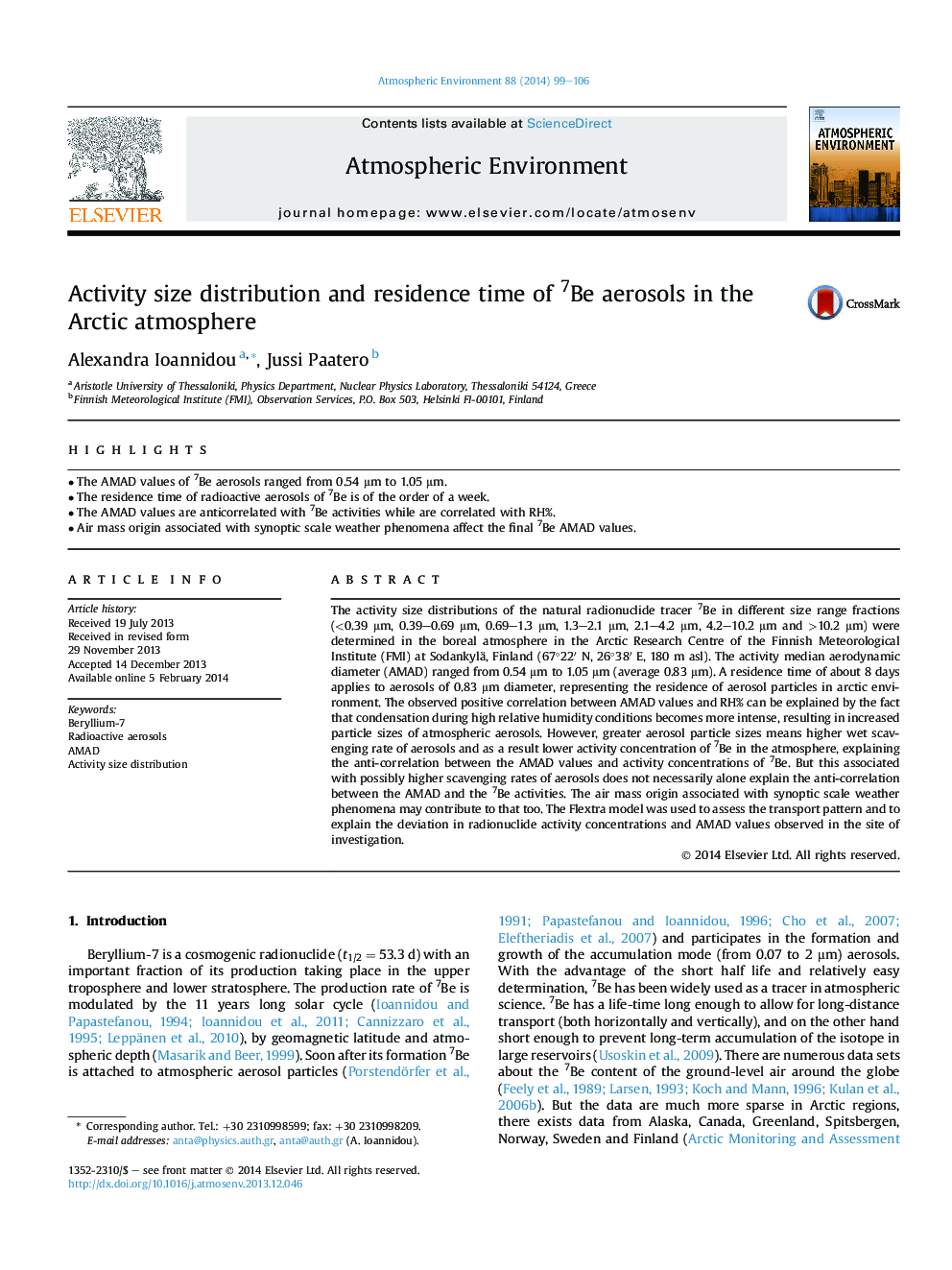| کد مقاله | کد نشریه | سال انتشار | مقاله انگلیسی | نسخه تمام متن |
|---|---|---|---|---|
| 6340844 | 1620383 | 2014 | 8 صفحه PDF | دانلود رایگان |

- The AMAD values of 7Be aerosols ranged from 0.54 μm to 1.05 μm.
- The residence time of radioactive aerosols of 7Be is of the order of a week.
- The AMAD values are anticorrelated with 7Be activities while are correlated with RH%.
- Air mass origin associated with synoptic scale weather phenomena affect the final 7Be AMAD values.
The activity size distributions of the natural radionuclide tracer 7Be in different size range fractions (<0.39 μm, 0.39-0.69 μm, 0.69-1.3 μm, 1.3-2.1 μm, 2.1-4.2 μm, 4.2-10.2 μm and >10.2 μm) were determined in the boreal atmosphere in the Arctic Research Centre of the Finnish Meteorological Institute (FMI) at Sodankylä, Finland (67°22â² N, 26°38â² E, 180 m asl). The activity median aerodynamic diameter (AMAD) ranged from 0.54 μm to 1.05 μm (average 0.83 μm). A residence time of about 8 days applies to aerosols of 0.83 μm diameter, representing the residence of aerosol particles in arctic environment. The observed positive correlation between AMAD values and RH% can be explained by the fact that condensation during high relative humidity conditions becomes more intense, resulting in increased particle sizes of atmospheric aerosols. However, greater aerosol particle sizes means higher wet scavenging rate of aerosols and as a result lower activity concentration of 7Be in the atmosphere, explaining the anti-correlation between the AMAD values and activity concentrations of 7Be. But this associated with possibly higher scavenging rates of aerosols does not necessarily alone explain the anti-correlation between the AMAD and the 7Be activities. The air mass origin associated with synoptic scale weather phenomena may contribute to that too. The Flextra model was used to assess the transport pattern and to explain the deviation in radionuclide activity concentrations and AMAD values observed in the site of investigation.
Journal: Atmospheric Environment - Volume 88, May 2014, Pages 99-106